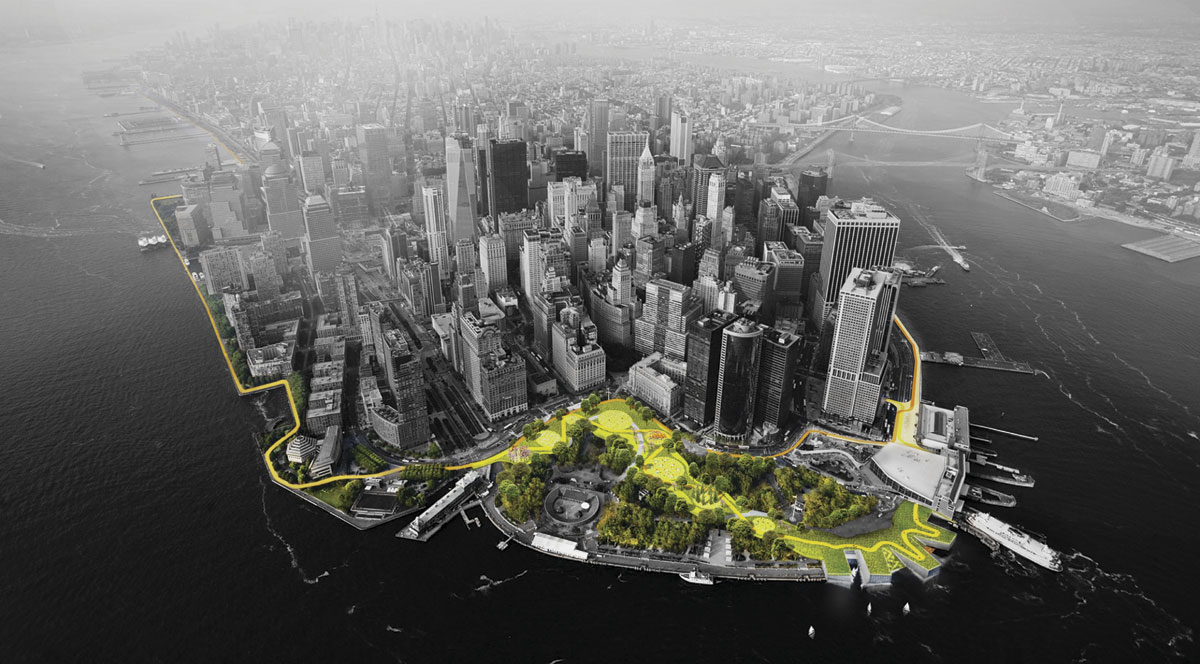The numbers are omnipresent, the responsibility inescapable. Buildings consume more than 40% of the world’s energy, and more than 70% of its electricity. Even these dire numbers underrepresent the true consequences of our buildings as many collateral impacts are not properly counted and attributed; for example, the embodied energy of buildings is currently charged to the industrial sector. And, of much greater concern, the rapid development taking place throughout the world will consume resources and energy at levels far beyond our capacity to manage greenhouse gas levels and the accompanying global temperature rise.
Future visions of Manhattan. Bjarke Ingels, “Big U Plan”
Certainly the profession of architecture has been active in regard to global energy and environmental concerns, and we need no longer champion those architects and practices whose early clarion calls to a greater environmental stewardship through sustainable design put them at odds with the rest of our professional community. Rather, our community is now in lock-step with the principles and procedures of those early adopters, while those few architects who continue to defend the autonomy of architecture as necessarily immune to the perceived determinism of sustainable design are considered as out-of-touch anachronisms.Full content is available only for registered users. Please login or



















